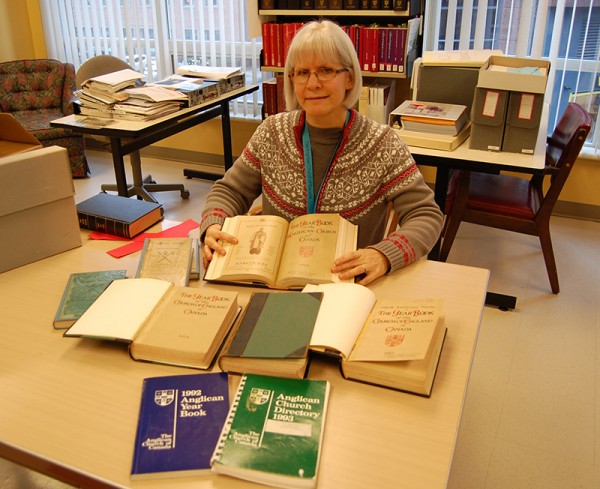
The newest edition of the Anglican Church Directory was released on Feb. 10, reinforcing the book’s status as the definitive reference for Anglicans in Canada.
In its current form, the directory provides a complete list of contact information for all dioceses, parishes and clergy in the Anglican Church of Canada as well as General Synod staff members and departments.
Yet, as noted by Laurel Parson, assistant archivist for General Synod, it hasn’t always been that way.
Presiding over an archival collection of church directories dating back to 1886, Parson described a rich history for the directory from its early beginnings as a church yearbook and purview list.
Initially, she said, outsiders with a vested interest in selling church calendars and clergy lists to Anglicans in Canada compiled the information in the yearbook, which she compared to Crockford’s Clerical Directory, the authoritative resource for the Church of England that contains in-depth biographies of all clergy members.
Parson described early editions of the Canadian church yearbook as “almost like a mini-Crockford, because if you look at them, they tell you their training, where they worked before…but just their clerical career, not family or anything like that.”
Other features of the yearbook included photographs and biographies of new bishops, a church calendar with feasts and readings, a glossary and a complete clergy list.
The early 1930s saw the creation of a formal yearbook committee for the Church of England in Canada. At the time, General Synod had three major committees—the Missionary Society for the Church of England in Canada, the Council for Social Service and the General Board of Religious Education—and published annual reports on the work of each in the yearbook.
In 1937, the yearbook saw a major reorganization as all diocesan information, including parishes and clergy, was pulled together into one section each. Through the 1930s and ’40s, the yearbook continued to include a historical synopsis of how the church was organized.
During the late ’60s—a period that Parson called “a time of major, major transition for the church”—the entire national office was restructured and its three standing committees changed.
“They basically formed General Synod with departments as we know it now, rather than just committee structures…That’s when the yearbook committee disappeared, and that’s when a lot of the informational stuff [in the yearbook] also disappeared,” Parson said. “It just became a directory, basically.”
From a yearbook, the Anglican directory evolved into its current incarnation, officially taking the name of Anglican Church Directory during the 1990s. Today, the directory remains an indispensable resource for Anglicans and others wishing to contact clergy, dioceses and parishes.
Check the Anglican Church of Canada website next week for a follow-up story detailing the work that went into producing the 2015 Anglican Church Directory.
Interested in keeping up-to-date on news, opinion, events and resources from the Anglican Church of Canada? Sign up for our email alerts .
